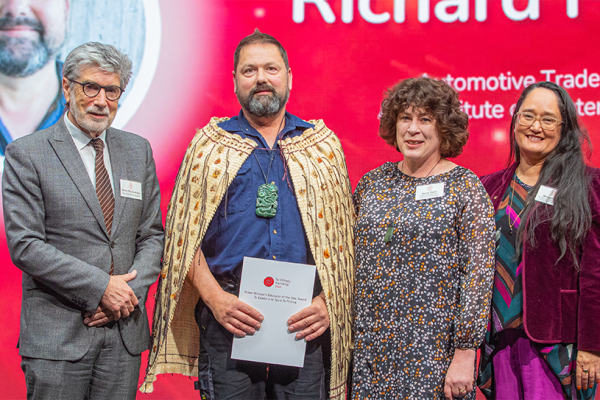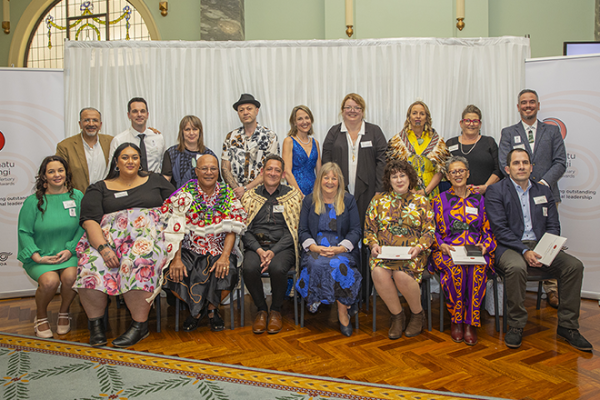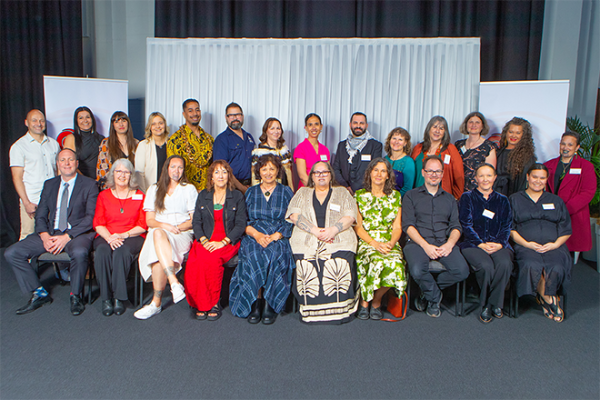Associate Professor Kim Hébert-Losier
Teaching with identity and integrity – a foundation for learner success
Category winner: Innovation in learning, teaching, and curriculum
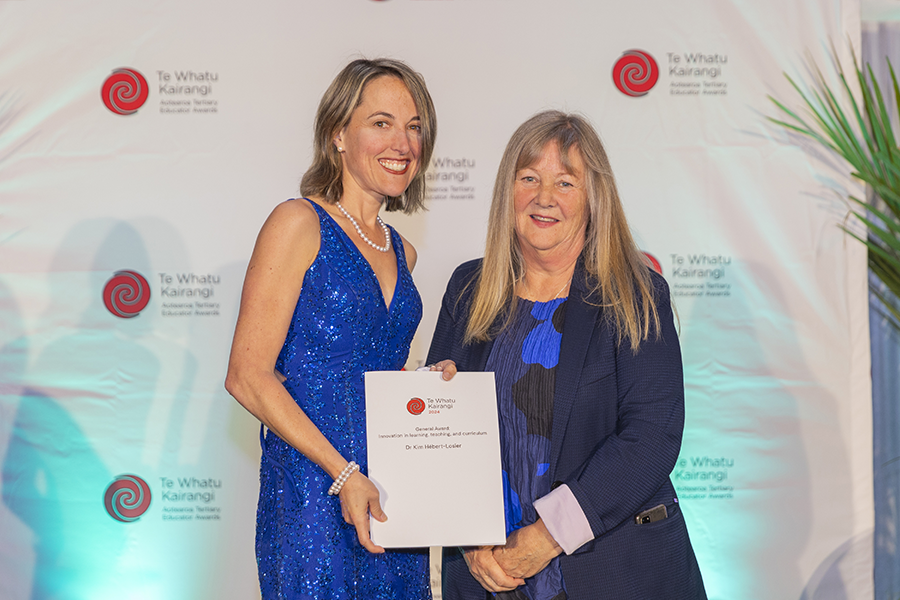
Associate Professor, Sports Biomechanics, University of Waikato
“I have three core values that guide my teaching philosophy: build a strong foundation; teach with identity and integrity, and be student-centric.”
Kim aspired to teach French Literature in her youth, but a football ankle sprain and a passionate physiotherapist changed her path by introducing her to the world of physiotherapy and the wonders of the human body. She now seeks to “infect” others with this same passion in her teaching. Kim is an Associate Professor in Sports Biomechanics at the University of Waikato (UoW). Her primary workplace is the Adams Centre for High Performance in Tauranga, but most of her undergraduate teaching is on the main Hamilton campus, a one and a half hour commute each way. She teaches musculoskeletal anatomy and sports biomechanics, which students find challenging to learn due to its density of content. This challenge has driven Kim to seek student-centric solutions.
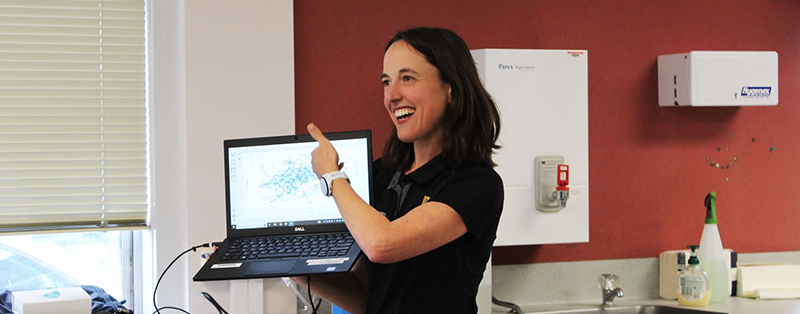
Since Covid 19, Kim has fostered a hybrid approach, where lectures are delivered asynchronously online and laboratories are delivered face-to-face. This increases flexibility in student learning, enhances accessibility for diverse learners, and also develops the practical skills sought by industry. In her undergraduate biomechanics content, she ensures a logical progression both within and between papers. She establishes foundational knowledge and competencies first and integrates more complex topics later. She embeds relatable real-world examples in her teaching, knowing that students learn best when they see practical value. The value of teaching with identity and integrity emanated from her 2017-2018 parental leave when she began sharing more of herself. Her commitment to being student-centric stems from her growing appreciation of the value of building relationships and fostering environments where students feel able to “come as they are”. She believes each person can be successful and offers support to those who are struggling. In 2023, she was awarded the UoW Teaching Excellence award.
Kim’s key teaching approaches are planning and organisation, “no surprises”, and providing interactive and varied learning environments. In order to facilitate effective scaffolding, she strives to align learning activities with the intended learning outcomes. She spends considerable time designing the Learning Management System (Moodle), landing pages for her papers and complementary theoretical/practical content. Her “no surprises” policy means that expectations are clear from the start. She teaches students what they will be examined on, providing them with key questions and covering assessment guidelines step-by-step with them. She finds this approach particularly valuable for diverse learners, especially neurodiverse and first-in-family students. She makes weekly course material reliably accessible, sends weekly updates and reminders and replies to student queries quickly and empathetically. This clear communication and instructor presence is vital since she is delivering asynchronous online lectures from Tauranga and is only present on the Hamilton campus for laboratories. She provides interactive and varied learning environments, anchored by diverse high-quality resources, such as review material, that she continually refines. She incorporates multimodal educational approaches (in-person and online) to meet the diverse needs of students and promote inclusive education. These include live demonstrations, interactive online models, animations, and YouTube videos.

In 2023, she was part of a team which secured Waikato–Newcastle seed funding for the project Enhancing Indigenous Cultural Capability and Student Engagement in Science and Health through Collaborative Learning and Animated Videos. After visiting the University of Newcastle in Australia and based on student feedback, she sought to innovate by embracing microlearning, where small single-focused interactive content is presented to learners asynchronously, using technologies that accommodate multimodal delivery, and which can be accessed where and when convenient. With assistance from the Centre for Tertiary Teaching and Learning (CeTTL), Kim developed online interactive content that follows each micro 5-to-10-minute lecture recording – a vast change from the conventional 1.5-to-2-hour block lectures she previously delivered. Students can pace their learning and then test themselves, fostering retrieval practices shown to be highly effective for enhancing retention of anatomy and biomechanics. Her microlearning approach has increased student engagement and feedback from students has been overwhelmingly positive.
Kim says she is on a continuous journey towards bettering her understanding and promotion of mātauranga Māori. In her practice, relationships are fostered, learning environments are interactive and varied, and power is shared. In 2023, she started incorporating weekly activities, such as icebreakers and games, motivated by discussions with students. When she first started teaching in New Zealand in 2016, she used examples from sports that were familiar to her Canadian background, like ice hockey, but soon realised she could be further culturally responsive and reach students more by adapting her examples. The biomechanics student cohort is diverse, with a third identifying as Māori or Pacific, and these students especially vocalise their desire to take their knowledge back to impact their communities. Kim has found that student success rates have risen due to the clarification, diversification, and redesigning of assessments which cover the spectrum of graduate knowledge and skills sought.
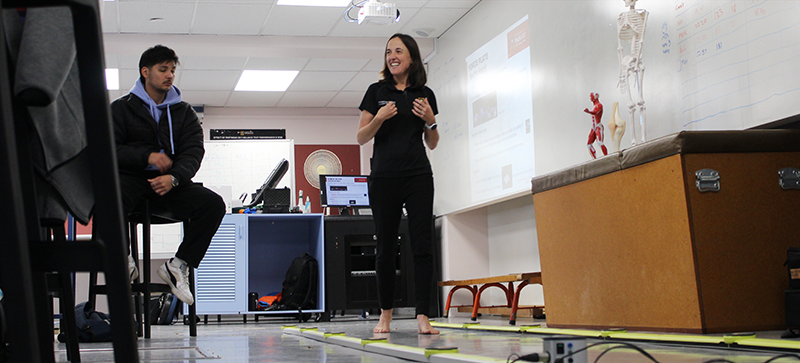
Having worked in clinics and sports, Kim has a good grasp of the skills the industry seeks in graduates. She engages daily with key industry stakeholders as she works from the Adams Centre for High Performance. She also maintains good relations with national and community organisations, such as ACC and Ngāti Ranginui Te Piripoho. As a role model for women in biomechanics, she has led National Biomechanics Day at the UoW since 2017. The organisers host 70 to 150 secondary students annually at the Adams Centre who partake in experiential biomechanics activities. She has published two peer-reviewed articles with international colleagues on this initiative and, in 2021, she and her PhD student received a NBD Women Outreach grant, targeting at least 50% women participation. Since 2016, she has supervised to completion eight PhD and eleven research MSc students, which included two MSc Māori (Ngāti Whātua and Te Arawa) students who excelled in their research studies and secured top jobs in the industry. Kim’s work can be replicated across various domains of education, such as nursing and other medical professions.
“My current microlearning model with interactive online H5P activities and mixed-methods assessment strategies builds resiliency within teaching and learning that is adaptable to future societal shifts and amenable to remote learning.”

